The rampant prescription of antibiotics for conditions that don’t necessarily merit them is creating a whole new generation of antibiotic-resistant bacteria. The struggle to stem the overreliance on antibiotics doesn’t begin and end with physicians, however. It takes cooperation across the entire continuum of care.
Thanks to initiatives such as the recently convened White House Forum on
Antibiotic Stewardship, a road map on this issue is being developed for post-acute and long term care.
Whether a facility is just beginning to plan its stewardship journey, has already begun its trip, or is farther down the road, most will be asking, “Are we there yet?” before reaching the final destination. Fortunately, along the road, there are lessons to be learned, best practices to share,
resources to tap, and partnerships to form.
 Antibiotics Not A Panacea
Antibiotics Not A Panacea
“This is a growing issue and a challenging one. Most of us grew up in a generation where antibiotics were miracle drugs, and now we’re seeing a lot of negative byproducts,” says Leonard Russ, owner/administrator of New York-based Bayberry Care Center and chair of the American Health Care Association Board of Governors.
“There is still a health care culture of relying heavily on antibiotics—to a fault,” he says. “We’ve come a long way toward realizing that antibiotics aren’t necessary in treating conditions such as asymptomatic urinary tract infections. However, the larger issue with stewardship is determining when an antibiotic is warranted in a given clinical situation.”
The first step—awareness that antibiotic overutilization is causing resistant bacteria and other negative outcomes—is already happening, thanks to the White House Forum and other national initiatives. “The challenge over the next few years is for our profession to devise solid parameters that foster responsible and effective antibiotic stewardship widely accepted by all stakeholders. We should do this before regulatory prescription comes in and takes away clinical discretion,” says Russ. He adds, “We still have a way to go on this issue. We still live in a society where people expect a pill to be a cure-all.”
The Problem
According to the Centers for Disease Control and Prevention (CDC), more than 2 million people in the United States annually contract infections that are resistant to antibiotics, and at least 23,000 die as a result. In addition to the illness and deaths caused by resistant bacteria, Clostridium difficile (C. difficile), a serious diarrheal infection, is associated with antibiotic use. This condition alone causes at least 250,000 hospitalizations and 14,000 deaths every year, CDC reports.
Antibiotic resistance hinders the ability to resolve or prevent routine infectious diseases and undermines the treatment of infectious complications in patients with other diseases. Many medical treatment advances, such as joint replacement and cancer therapies, depend on the ability to fight infections with antibiotics. This is of significant concern, especially with frail elders for whom an otherwise minor infection can exacerbate quickly and become life-threatening in a short time.
The use of antibiotics is the key cause of antibiotic resistance worldwide. Considering that antibiotics are among the most commonly prescribed medications and that up to half of antibiotic use is unnecessary or inappropriate, this suggests a problem of enormous proportions, CDC says.
What Is Antibiotic Stewardship?
The Society for Healthcare Epidemiology of America defines antibiotic stewardship as “coordinated interventions designed to improve and measure the appropriate use of antimicrobial agents by promoting the selection of the optimal antimicrobial drug regimen, including dosing, duration of therapy, and route of administration.”
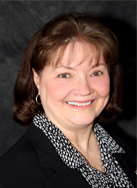
Sharon Bradley, RN, CIC, senior infection prevention analyst at the Pennsylvania Patient Safety Authority, suggests that a stewardship program should promote improved patient outcomes by reducing treatment failures, lengths of stay, morbidity, and mortality. The program also should aim to increase infection cures and appropriate prescribing; reduce adverse effects, C. difficile rates, and antibiotic resistance; and improve pathogen susceptibility profiles.
With the rise of antibiotic-resistant “superbugs” such as methicillin-resistant Staphylococcus aureus and escalating rates of C. difficile infections, antibiotic stewardship started to come into the spotlight earlier this century.
How serious is the problem? CDC estimates that antibiotic-resistant infections cost $20 billion to $35 billion in direct health care costs each year and add as many as 8 million additional days to hospital stays.
The cause for resistance is primarily extensive exposure of the bacteria to antibiotics. While the antibiotic kills susceptible bacteria, resistant strains survive and multiply. These resistant strains could eventually rebuff all current antibiotics, thus either prolonging time spent healing or even result in death.
CDC has determined that four core actions are necessary to combat antibiotic resistance: preventing infections and the spread of resistance, tracking antibiotic-resistant infections, improving antibiotic use/stewardship, and developing drug and diagnostic tests.
Tackling The Problem
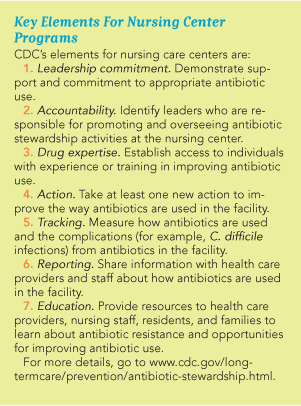
In 2013, President Obama tasked his President’s Council of Advisors on Science and Technology with establishing actionable recommendations about how the federal government can address the rise of antibiotic resistance. In 2014, the council released a report that focused on three areas:
■ Improving surveillance of the rise of antibiotic-resistant bacteria to enable an effective response, stop outbreaks, and limit the spread of resistant organisms;
■ Increasing the longevity of current antibiotics by improving the appropriate use of existing drugs, preventing the spread of antibiotic-resistant bacteria, and shoring up proven interventions to decrease the rate at which microbes develop antibiotic-resistance; and
■ Increasing the rate at which new antibiotics and interventions are discovered and developed.
Earlier this year, the White House released a comprehensive plan identifying actions to be taken by federal departments and agencies to tackle antibiotic resistance. The National Action Plan for Combating Antibiotic-Resistant Bacteria is organized around five goals:
■ Slow the emergence of resistant bacteria and prevent the spread of resistant infections;
■ Strengthen the national One Health surveillance efforts to combat resistance;
■ Advance the development and use of rapid and innovative diagnostic tests for identification and characterization of resistant bacteria;
■ Accelerate basic and applied research and development for new antibiotics, other therapeutics, and vaccines; and
■ Improve international collaboration and capacities for antibiotic resistance, prevention, surveillance, control, and research/development.
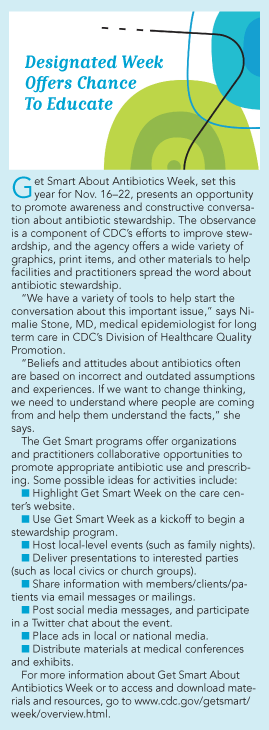 Achievable Outcomes
Achievable Outcomes
Working through the action plan, the government anticipates several significant outcomes by 2020. These include establishment of antimicrobial stewardship programs in all acute care hospitals and improved stewardship across all health care settings, 50 percent reduction in antibiotic use in outpatient and 20 percent in patient settings, establishment of state antibiotic-resistance prevention programs in all 50 states, and elimination of medically important antibiotic use for growth promotion in food-producing animals.
Elsewhere, this summer representatives from more than 100 health organizations participated in the White House Forum on Antibiotic Stewardship to discuss implementing relevant programs and their critical role in addressing antimicrobial resistance. “One positive result of the forum is that it established a dialogue about state-of-the-art thinking and best practices regarding stewardship,” Russ says.
Current Centers for Medicare & Medicaid Services (CMS) regulations require antibiotic review as part of hospital and long term care facility infection control programs. However, earlier this summer, CMS announced changes to skilled nursing facility (SNF) regulations, including a proposal to require SNFs to have an antibiotic stewardship program.
According to the proposal, “Nursing homes need to have the tools to participate in surveillance, learn and use infection control and containment practices, and adopt a proactive approach to preventing spread while being good stewards of antibiotics to preserve effectiveness of the agents we have today.” The proposal was still open to comments at press time.
Getting The Message Out
Facilities need to spread the word about antibiotic use. James Keegan, MD, an infectious disease specialist who leads the antibiotic stewardship team at Knoxville, Tenn.-based health care management consulting firm, PYA, explains, “In the past, we would use antibiotics as a precautionary measure, but we’ve found that we actually make things worse by using them as a measure of insurance. Now our strategy has to be to steward each patient’s treatment conservatively, using therapeutics and reducing antibiotic use generally.” He adds, “We need to get the message out that this revised strategy is effective.”
This messaging starts with facility leadership, Keegan says. “We’ve been educating health care leaders and champions of facilities: Altered mental status generally isn’t caused by infection in the absence of fever and other symptoms. The medical director needs to be willing to communicate this to prescribers and hold them accountable to those standards,” he says.
How To Start
Old habits die hard, and it may be difficult for some prescribers and nurses to think beyond antibiotics.
“Part of the change in management strategy with prescribers is to share literature on best practices and provide evidence-based protocols,” says Keegan. “When physicians have the opportunity to review this information, they are more likely to make good decisions and are less resistant to change.”
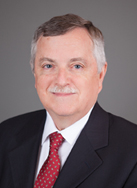
Keegan suggests sharing such information with new attending physicians and ensuring that they understand policies and procedures regarding infection control and antibiotic use.
“We outline this for new health care providers so that they know what is expected of them. Someone coming from a different geographic region or practice setting may have an approach that isn’t appropriate or effective here,” he says.
All of this is an ongoing process, Keegan suggests. “We pay attention to the literature as it comes out, and we share this to try and help others be successful as well.” He adds, “Communication and cooperation over time need to be aligned so that you can help the team of providers to see the big picture regarding antibiotics.”
Surveillance And Communication
Active surveillance of antibiotics is necessary, Keegan says. “If you’re vigilant on a daily basis, you’re ahead of the game. You will pick up on problems and issues quickly and can address patterns in prescribing such as attending physicians, shifts, or units who exhibit higher antibiotic prescribing rates.”
For example, surveillance helped Keegan and his team identify a nursing care center that was over-using Foley catheters. “We were able to go in and talk with their team about why these aren’t necessary and offer suggestions for alternative measures they can take,” he says.
Access to data such as information in electronic health records can have a huge impact.
“We were able to reduce overall antibiotic use by 30 percent without additional morbidity or hospitalizations,” says Robin Jump, MD, PhD, assistant professor at Case Western Reserve University and infectious disease physician at the Louis Stokes Cleveland VA Medical Center. “The difference was having a records system that enabled us to see what providers were doing.”

Data and statistics can be helpful when medical directors need to deal with physicians who are over-prescribing antibiotics. “Evidence from the literature suggests that peer-to-peer communication works best, and it is helpful to have data to support these efforts,” says Jump. “Have a prescriber with a low rate of antibiotic prescribing counsel one with a high rate.”
Knowing what happens in one’s own facility can lead to improvement, says Zachary Palace, MD, medical director at The Hebrew Home at Riverdale in New York. “We found that when a urine test came back positive for nitrates, it would automatically trigger a culture. We decided to fine-tune our ordering of cultures. We educated our practitioners to be more judicious in ordering cultures.”
Palace watches his numbers like a hawk. “If there is a rise or spike in our UTI [urinary tract infection] rate, I work closely with our infection control nurse. We go back and conduct a root-cause analysis to determine what is causing the increase. Then we can address it promptly.”
Mark Coggins, PharmD, CGP, FASCP, a South Carolina-based consultant pharmacist who serves as senior director of pharmacy services for Diversicare Management Services in Brentwood, Tenn., suggests that facilities also look at their antibiograms, lab results that show the sensitivity of an isolated bacterial strain to various antibiotic medications. This information, he says, can help prescribers choose the best antibiotic for each patient.
Team Talk
While the medical director and attending physicians are players in antibiotic stewardship, don’t forget other team members. For example, Jump says, “Nurses have a huge influence over what happens with patients. If we help them understand how to work and communicate with physicians effectively, we can reduce antibiotic use.”

It is essential to encourage staff to think outside the box and avoid knee-jerk reactions to issues such as behavioral changes, she says.
“For example, we had a woman who refused to talk to family or staff for a day. They didn’t know what was wrong. We checked her urine. It was positive for bacteria, but she was asymptomatic,” she says. Instead of putting the individual on an antibiotic, a physician spoke with her.
“It turned out that she was angry because she was supposed to get stuffed cabbage for dinner the night before and received something else,” Jump says. “By taking the time to talk to the resident and explore all the possibilities, we were able to avoid unnecessary treatment and find a simple resolution.”
Get Families Involved
Of course, no antibiotic stewardship program is complete without the involvement of patients and families.
“We have run into scenarios where families or patients think antibiotics are a magic bullet and insist on a prescription. Educating physicians to educate patients is an important part of getting the public to understand the implications of the misuse or overuse of antibiotics,” says Bradley of the Pennsylvania Patient Safety Authority.
One way to deal with patients and families is to “help them understand that you are doing something even if you don’t prescribe antibiotics,” says Alec Pruchnicki, MD, staff physician at The Lott Residence, an assisted living facility New York, N.Y. “Assure them that you will be monitoring the situation and start medications if and when it is deemed appropriate.
“Explain to them the problems with antibiotic resistance and that it can cause gastrointestinal problems or C. difficile diarrhea. Tell them that taking an antibiotic unnecessarily can cause a yeast infection. If they trust you, they will follow your guidance,” he says.
Follow Through On Compliance
When antibiotics are prescribed, Pruchnicki stresses the importance of ensuring that patients comply with dosing instructions. “Here, three-quarters of our residents get their medications directly from the nurses, so when a medication is prescribed, I know the patient will get the full dose,” he says. However, some patients will refuse medications or stop taking them after a few doses.
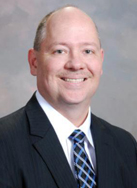
“You have to explain to patients that they have to take the medication until the last pill is gone or their infection will come back and be worse than before. Most will understand this,” Pruchnicki says. He notes that patients may not admit if they’ve stopped taking their medication, but a nurse or family member might.
Therefore, he says, “you really have to explain everything to all the players.”
Another important key to dealing with family members, says Keegan, is to determine a diagnosis. “If someone is confused, you need to find out why. If you can tell families that you’ve conducted aggressive diagnostics and determined that the problem is a virus that antibiotics won’t help, they are more likely to be agreeable,” he says. He also recommends that care centers make consumer-oriented information about antibiotics available in lobbies and waiting areas.
When residents go to the emergency department (ED), the family should be informed about what to expect. “We need to tell them that the ED physician likely will do a urine test and find bacteria. As a result, the resident will come back to the facility on antibiotics, and we likely will discontinue this prescription,” says Jump.
Educating residents and families should start at admission. Jump says, “When someone is admitted, we need to offer reassurance to the family that we want to get to know mom or dad and be able to identify what is causing various symptoms and behaviors. They need to know that before we expose their loved one to a potentially unnecessary narcotic, we want to conduct a thorough assessment.” While it may be tempting to give in to family pressure and prescribe antibiotics when they aren’t needed, Palace says, “We’ve learned that standing our ground is very effective. We offer a risk-benefit analysis and explain that when the risks outweigh the benefits, we shouldn’t use these drugs.” Families are more receptive when the facility has worked on building relationships and trust from the start, he says.
The Bounty of Low-Hanging Fruit
While the idea of an antibiotic stewardship program can seem daunting, it can be manageable by “starting small,” says Jump, with low-hanging fruit such as going from IV to oral conversions and antibiotic “time-outs where you re-evaluate the patient after a few days and try to either stop or at least narrow the antibiotic.” She says, “Report and share outcomes of your quality improvement efforts. Let people know when they’ve made a difference. Celebrate small successes.”
Nimalie Stone, MD, medical epidemiologist for long term care in CDC’s Division of Healthcare Quality Promotion, agrees that starting small is the way to go. “Facilities will want to work in a stepwise fashion. Take one or two activities to start with, then take one or two more. Perhaps the first step is to assess current practices and activities,” she says.

“Whatever you do, a successful effort requires the support of leadership—I can’t emphasize this enough. To get sustained change, you need resources and support from the top.”
The team at Masonic Village, a long term care facility in Elizabethtown, Pa., picked its own low-hanging fruit: urinary tract infections (UTIs). Medical Director J. Kenneth Brubaker says, “We noticed that our UTI rates were high and that we were ordering hundreds of urinalyses every year.”
After examining the situation carefully, the team determined that tests were being ordered even when there were no symptoms or when the patient exhibited symptoms that could have been related to other problems such as pain or hunger.
A patient would have a behavioral issue, and staff would assume that he or she had a UTI—even when there were no other symptoms—and request a urinalysis. As a vast majority of residents have some bacteria in their urine, the tests would come back positive, and an antibiotic would be prescribed.
“We implemented a process in which urinalyses were not ordered for asymptomatic UTIs,” Brubaker says.
“We also trained staff to look more closely at the root causes of behavioral issues. As a result, we were able to cut urine testing and the use of antibiotics for UTIs in half.”
Worth the Effort
Another potential starting point is dose/drug de-escalation. The consultant pharmacist is uniquely positioned to assist with this, says Coggins. “The pharmacist should be looking at each resident taking antibiotics and determine the appropriateness of the prescription, the specific drug choice, and the duration of the course of the treatment,” he says, adding, “We make sure that any use of antibiotics is monitored carefully. We want to get patients off of these drugs as quickly as possible.”

Antibiotic stewardship requires a commitment on the facility’s part, but it is well worth the effort. “When we institute and sustain processes that result in appropriate use of antibiotics, we see fewer incidences of complications such as C. diff and fewer antibiotic-resistant infections,” says Brubaker. “This contributes to improved outcomes and quality of life, as well as reduced costs and fewer hospitalizations.”
There can be no question of stewardship’s value, Coggins agrees.
“Everyone needs to know that antibiotic stewardship is a focus and that there are expectations for each practitioner and staff member. For staff such as housekeeping or maintenance personnel, it may be as simple as proper handwashing techniques. For nurses, it might be getting prompt, complete, and accurate information to physicians regarding a resident’s condition change,” Coggins says. “But when we get everyone involved and committed, we can make a real difference.”
Joanne Kaldy is a freelance writer and communications consultant based in Harrisburg, Pa.